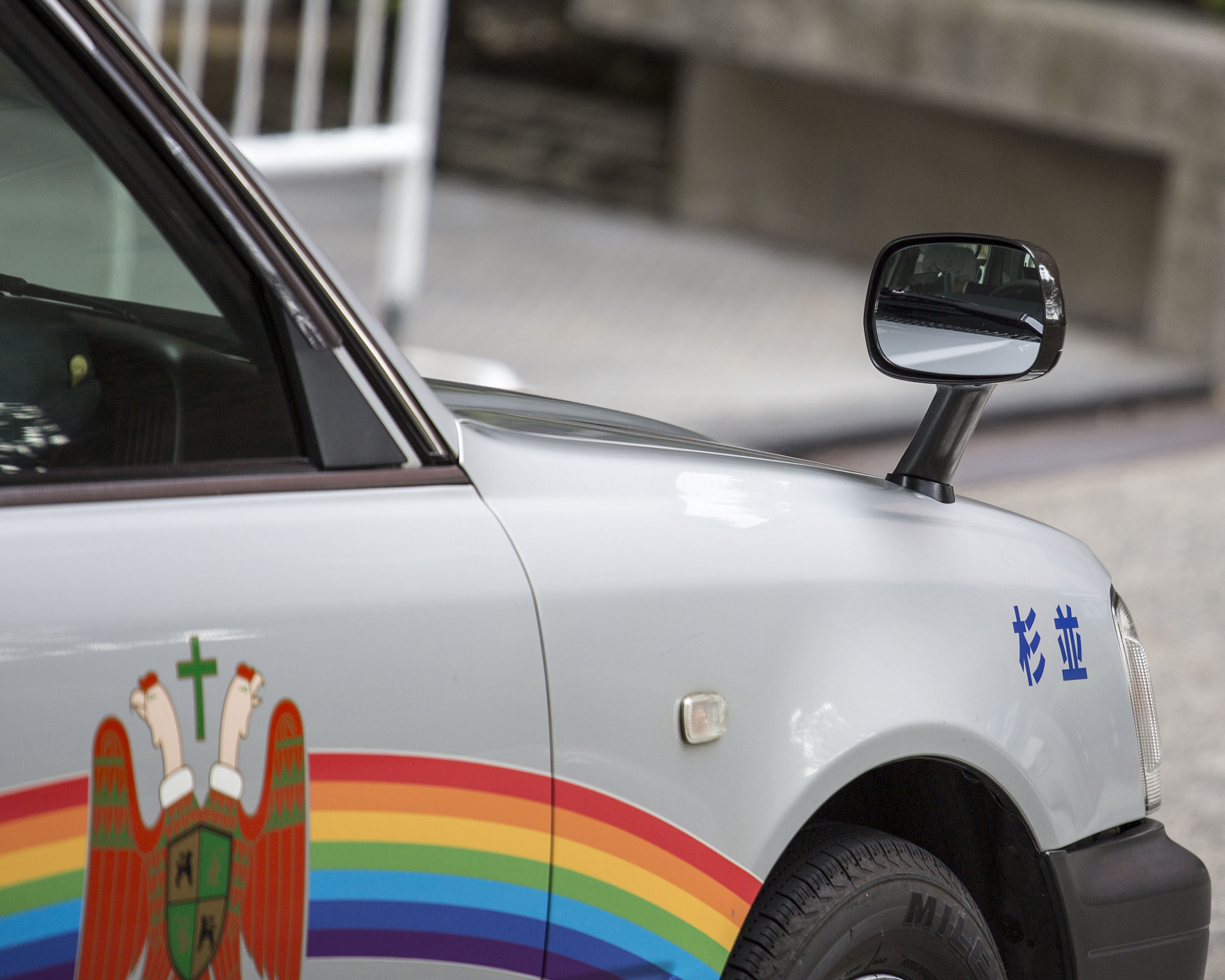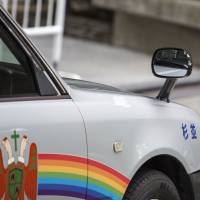Dear Alice,
I was a bit of a car nut when I was a boy, and while I've moved on to other interests, my eyes still tend to be drawn to automobiles. This is why, on my first visit to Japan just recently, I couldn't help but notice that Japanese taxi cabs have their rear view mirrors mounted all the way forward over the front wheel wells. Regular passenger cars, on the other hand, have their mirrors where I'd expect them, which is to say on the side by the door. So, what the heck is the reason for those forward mirrors on taxis?
Robert D., Chicago, USA
Dear Robert,
Those mirrors are a type of rear-view mirror and are called fendā mirā, adopted from the American-English "fender mirror." (In England, they're called "wing mirrors.") Once upon a time, they were standard equipment in the Japanese domestic market, but they've now all but disappeared. They do still exist on Japanese taxi cabs, for reasons I'll explain, but before I pull forward, let's take a look back.
The earliest automobiles weren't equipped with mirrors. If you wanted a good look to the rear, the only way to get it was to turn your head around to the back and look. This wasn't a good idea, naturally, as it meant taking your eyes off the road in front of you.
Various people are credited with inventing the rear-view mirror. American car racer Ray Harroun, for example, rigged a rear-view mirror onto the Marmon "Wasp" he drove to victory in 1911 in the first Indianapolis 500 race.
Even earlier, pioneering English female motorist Dorothy Levitt advised her fellow "motorinas" to keep a little hand-mirror in a convenient place while driving. In her 1906 book, "The Woman and the Car: A Chatty Little Handbook for All Women who Motor or who Want to Motor," Levitt wrote that the mirror should be "held aloft from time to time" to see behind while driving in traffic. Automobiles with fixed driving mirrors came on the market in 1914. Manufacturers tried various sorts of external rear-view mirrors, including mirrors mounted on the middle of the hood in front of the windshield, as well as fender mirrors and side-door mirrors.
For a crash course in the history of rear-view mirrors in Japan, I contacted the Japan Automotive Manufacturers Association and spoke to Ryuji Osuga in the technical division. Osuga explained that fender mirrors were standard equipment on passenger cars in Japan until 1983, when the law was liberalized to allow for door mirrors as well. Door mirrors had become the norm in the Western market, and foreign car-makers argued that Japan's refusal to recognize side-door mirrors amounted to a non-tariff trade barrier.
Once the market was liberalized, Japanese consumers overwhelmingly choose cars with side mirrors. "This was a time when many Japanese aspired to foreign-made products," according to Osuga. "Customers thought cars looked snazzier, and more like foreign cars, when they came with door mirrors instead of fender mirrors." Even when fender mirrors were offered as an option, so few customers opted for them that manufacturers eventually phased them out completely. "Japan's overseas markets all demanded door mirrors. So it was more rational, in terms of manufacturing and parts inventory, to bring the domestic market in line with the rest of the world, particularly since so few Japanese customers wanted fender mirrors."
The one exception was taxi drivers, who had such a strong preference for fender mirrors that cars built for the taxi market continue to come with fender mirrors as standard equipment. "The main reason taxi drivers prefer fender mirrors is that they provide better visibility," Osuga explained. "There is less of a blind spot so it's easier to confirm what is happening at the rear and side of the car, especially on the driver's side."
Another advantage of fender mirrors compared to door mirrors is they protrude less from the body of the car, which can really help when maneuvering in Japan's narrow roads and crowded traffic. "Those centimeters may not matter for the average driver," Osuga allowed. "But for professional drivers, who are behind the wheel all day, it makes a big difference."
Finally, taxi drivers feel that fender mirrors allow their customers greater privacy because drivers can use the mirrors without turning their head toward the passenger seat. "There's no way to use side-door mirrors without turning your head significantly to the side," Osuga explained. "That motion might be misconstrued as an effort to look into the back seat, in a way that would invade the customer's privacy. To avoid that possibility, and to extend as much privacy as possible to their customers, professional drivers prefer fender mirrors, which they can use without turning their head."
Your question about fender mirrors also got me reflecting on the cabs themselves, and I started checking out passing taxis to determine their make and model. I discovered that most of the taxis on the streets of Japan are one of three cars marketed specifically as cabs: the Toyota Comfort, the Nissan Cedric and the Nissan Crew. Nissan is no longer making cars for the taxi market, so about 90 percent of new taxi-cab purchases today are Toyota Comforts. The company's Prius is making gains in the taxi market, despite the fact that it doesn't come with fender mirrors.
For a sneak peek at taxis of the near future, head out to Tokyo Big Sight for the 43rd Tokyo Motor Show. At this year's show, which is open to the general public Nov. 23-Dec. 1, Toyota will display its new JPN Taxi Concept, a funky, boxy LPG hybrid that carries up to five passengers. The company says it borrowed design elements from London's iconic black cabs for the new cab's styling, but one thing remains quintessentially Japanese: it's got fender mirrors!


















With your current subscription plan you can comment on stories. However, before writing your first comment, please create a display name in the Profile section of your subscriber account page.